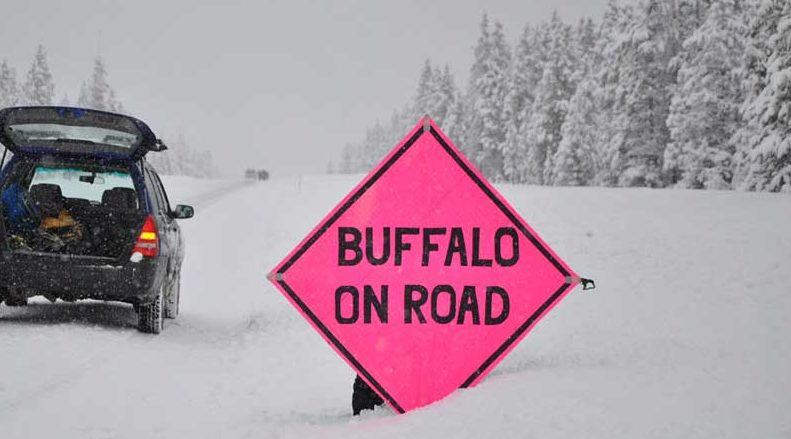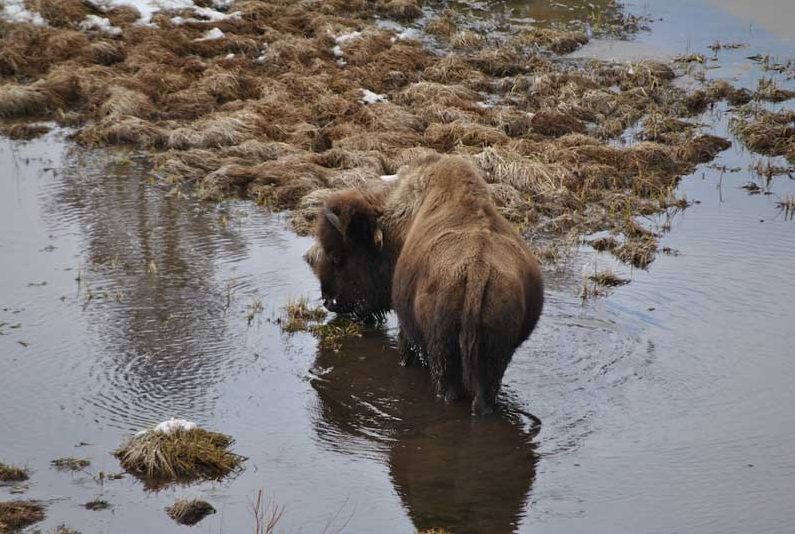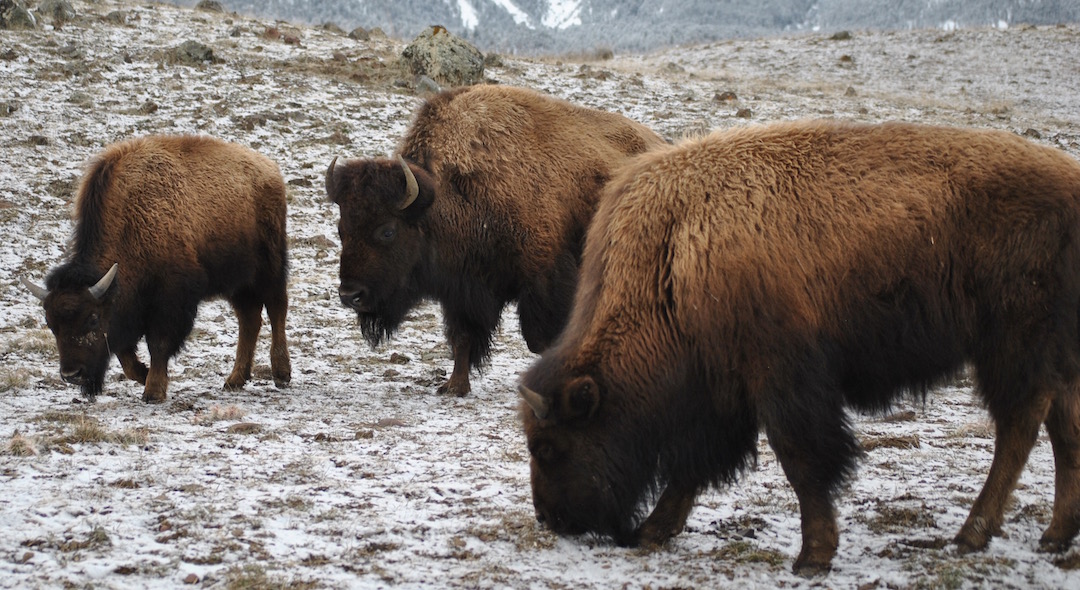Featured image: Buffalo head south, away from Yellowstone’s dangerous trap. Photo by Stephany Seay, Buffalo Field Campaign.
It gives us great pleasure to share some incredibly positive news with you. Two days after the heartbreaking media tour of Yellowstone’s Stephens Creek capture facility, where one hundred and fifty wild buffalo were “processed” and shipped to slaughter or otherwise condemned, the bulk of the trap was empty and Yellowstone was hungry to capture more bison. Haunted by what we had witnessed there, our hearts sank as large groups of buffalo approached the trap. As expected, Yellowstone park wranglers — those who work at the trap — attempted to capture these buffalo families. First they went after a group of seventy-two buffalo, then another group of thirty. But in a beautiful twist of fate, the buffalo sensed the danger and were determined to save themselves from slaughter. Watch this video to see what happens.

BFC patrols are busy day and night, in every kind of weather, helping buffalo and motorists stay safe on the highway as spring migration brings the buffalo to their traditional calving grounds. Photo by Stephany Seay, Buffalo Field Campaign.
As of this writing, there have been no other captures at Stephens Creek. Fifty-seven orphaned calves and yearlings remain captive, with Yellowstone telling us they don’t know how long they will be held or what their fate will be. There are currently no other buffalo near the trap, though the Park Service intends to keep it open through the end of March. Thankfully, the majority of buffalo have left the Gardiner Basin.
West of Yellowstone, in the Hebgen Basin, spring migration is beginning. BFC patrols have been extremely busy from early in the morning through late at night, warning traffic of buffalo along the highways. They are attempting to migrate to their favored, traditional calving grounds on Horse Butte, but there is still a lot of snow to negotiate. We’ve had some very warm days and extremely cold nights, so the snow is like concrete and difficult for the buffalo to navigate or forage through. Their best chances for food are along the south-facing slopes and the river and creek beds, where grass is slowly starting to become exposed. It’s a very difficult time for the buffalo and all wildlife, having survived one of the harshest winters in the lower-48 states and having all their fat stores used up and with the Earth providing very little nutrition as of yet. But buffalo are strong survivors and they will come, bringing the next generation. Wild buffalo should be safe on Horse Butte, thanks to Governor Steve Bullock’s decision to grant some year-round habitat. But, we will not know for sure until the decision is accepted or not at the next Interagency Bison Management Plan meeting on April 6, in West Yellowstone and until we see how the Department of Livestock interprets the decision.

Food choices in the early spring are slim, but this pregnant mama makes due. Photo by Stephany Seay, Buffalo Field Campaign.
The buffalo and BFC need you right now. Many of the volunteers who have been with us all winter will be leaving soon due to spring commitments. We are losing a fair number of people just as our busy season begins. If you have the time and desire, please consider volunteering with us. BFC provides room, board, gear, and training to our volunteers — all you need to do is get here. Please check out our volunteer page to learn more. We hope to see you on the front lines in the land of the last wild buffalo!


The buffalo say EAT MY DUST!!!!!